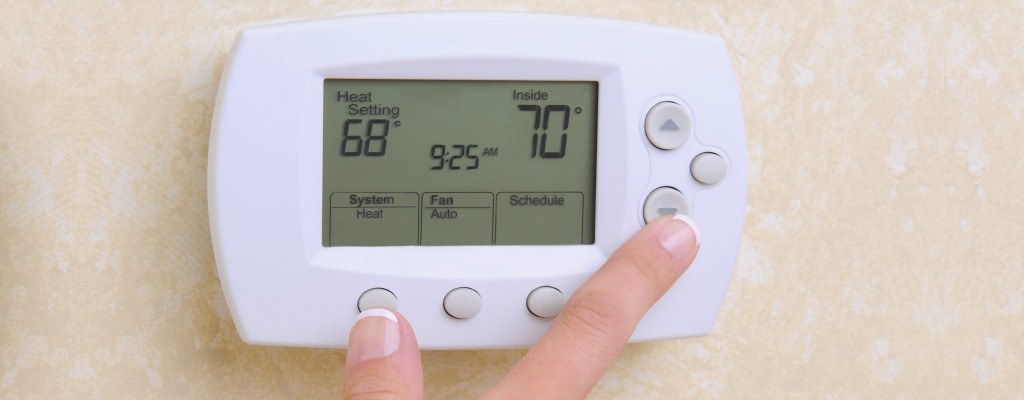Whether your HVAC system has an antique mercury thermostat or a new state-of-the-art smart thermostat, you’re probably still surprised when your thermostat gets weird. You know the feeling when your thermostat is set to 71°, but it’s 75° outside and the heat kicks on – or vice-versa with the AC in the winter.
What’s up with your thermostat problem, and what can you do about it? We’ll show you how to handle a weirdly-acting thermostat.
Check your thermostat’s batteries
Your first step should always be to check the batteries in your thermostat, if it has any. When your thermostat isn’t getting the power it needs, it will start acting strangely. We recommend replacing your thermostat’s batteries as part of your annual maintenance routine.
Check your thermostat’s accuracy
Get a known-accurate thermometer and take a reading right next to your thermostat, then compare it to the room temperature your thermostat is displaying. If there’s a significant difference, you know your thermostat is misreading the room temperature.
Grease and dust and settling on an older mercury-bulb thermostat can adversely affect its accuracy. We suggest upgrading to a modern model, such as a digital programmable or smart thermostat. If your thermostat already is digital, you should check its calibration carefully. Many newer digital thermostats can be adjusted up and down by several degrees. Your thermostat’s manual will have more details. Don’t have the manual? Look it up online! Most thermostat manuals are available as a free online download.
Is your thermostat installed correctly?
Your thermostat’s installation also matters. If the hole in the wall behind it isn’t sealed correctly, air from your attic or crawlspace could cause an inaccurate temperature reading. Its quality is also essential – that cheap thermostat may not be very accurate. Invest in a high-quality smart thermostat – like a Nest or Ecobee – and it’ll pay for itself in energy savings!
Make sure your thermostat’s location doesn’t affect it
Start by making sure no sunlight shines on your thermostat. Lights and electronics located near your thermostat can also affect its accuracy, so be sure to give your thermostat some space away from them. Likewise, being near a door will also impact a thermostat’s performance, as cooler or warmer outdoor air will work its way past leaky door seals. A hallway with no windows is the ideal place for your thermostat. Need your thermostat moved? Call us! Our expert techs will have your thermostat relocated to the perfect spot in no time.
The problem might be something else
Years of quality service have taught us that the majority of calls for a thermostat problem usually end up being an issue with a customer’s HVAC system itself. A dirty flame sensor, a frozen AC coil, poor air circulation – they all affect your HVAC system’s operation, without involving the thermostat. Fortunately, a seasonal system tune-up will take care of all these problems.


Comments are closed